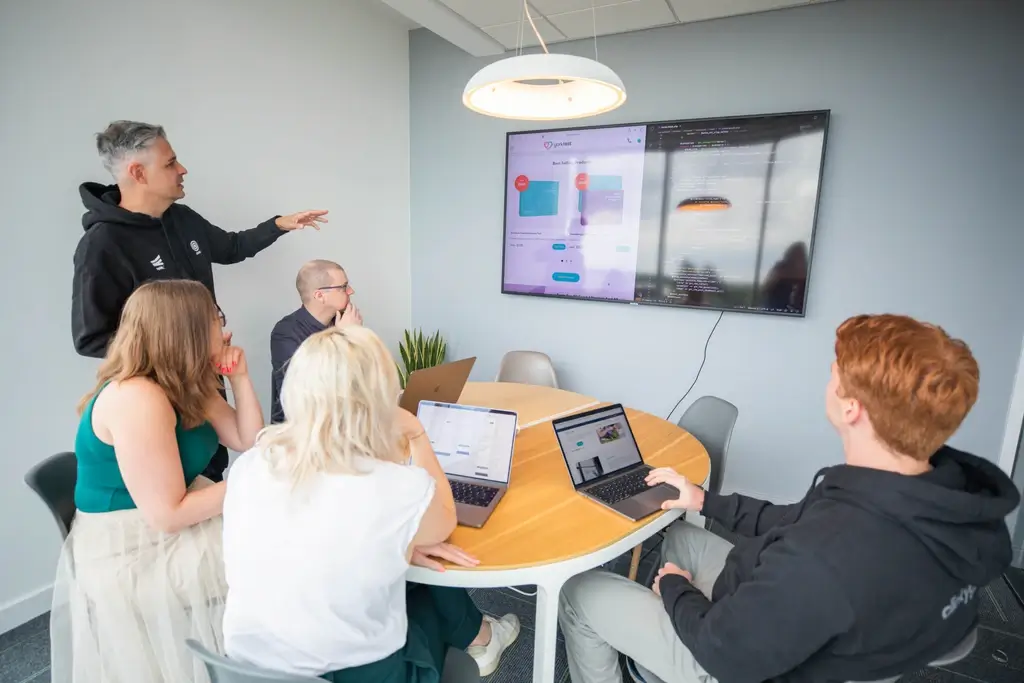Insights
How to Structure Your User Testing Workshop for Maximum Results.
September 7, 2023

Written by:
We all like to think that we’re experts on our target audiences. After all, every business relies on understanding who they’re trying to appeal to and what they want, so we should be experts, right? In reality, we can make a good guess based on what we think in terms of audiences, but in reality the people who visit your website, interact with your content and ultimately convert online might be vastly different in terms of their needs and demographic versus your expectations. That’s where user testing comes in and gives you the hidden insights that can unlock surprising truths about behaviour.
What is a user testing workshop?

A website user testing workshop is a structured session where individuals or a team of designers, developers, and stakeholders come together to assess the usability and functionality of a website or web functionality. The primary goal is to identify potential issues, gather feedback, and make improvements to enhance the overall user experience.
How does it work?

Here’s an outline of how a typical website user testing workshop might work:
-
Preparation: The workshop facilitator or organiser selects a group of participants who represent the target audience for the website. These participants can be both internal team members and external users, but choosing the right people is essential
-
Testing Scenarios and Tasks: Specific scenarios and tasks that participants will perform on the website will be chosen. These tasks should be based on typical user actions and goals, for example, “Find the product page for XYZ product and add it to your basket.”
-
Observation and Note-Taking: Observers watch as participants navigate the website and complete the defined tasks. They take notes on any difficulties encountered, confusing elements, or positive aspects of the user experience.
-
User Feedback: After participants complete the tasks, the facilitator can lead a discussion where participants share their thoughts, opinions, and feelings about the website. This feedback can be both qualitative (user opinions) and quantitative (time taken to complete tasks, success rate, etc.).
-
Identifying Issues: Based on participant feedback and observations, the workshop participants collectively identify usability issues, design flaws, and areas of improvement in the website’s user interface and functionality.
-
Identifying Solutions: The workshop attendees can then brainstorm potential solutions to address the identified issues. This can involve proposing design changes, layout adjustments, content improvements, and more.
-
Prioritisation: Once solutions are suggested, the team will discuss and prioritise them based on factors like the severity of the issue, impact on user experience, and feasibility of implementation.
-
Actionable Insights: The workshop concludes with a list of actionable insights and recommendations. These insights can be used to guide further design and development efforts to improve the website’s user experience.
-
Iterative Process: The user testing workshop is often part of an iterative design process. After implementing the recommended changes, another round of testing and feedback can be conducted to ensure that the improvements have been effective and to identify any new issues that may have arisen.
In essence, a website user testing workshop is a collaborative effort to evaluate a website’s usability from the user’s perspective and make informed decisions for refining its design and functionality.
If you’re not ready to undertake a full user-testing workshop, there are other more manageable options available. Online platforms are available (like Maze, Mouseflow and User Testing with banks of signed-up testers of varying ages, demographics and interests that can be called upon to perform testing and tasks, recorded with full audio captured to hear and understand a user’s thought process. These platforms can help to quickly identify areas on a site of high friction, or even places that create frustration and user ‘rage’, so this is a great option to take if a user testing workshop isn’t an option.
Should I do it?
When creating any new elements on your site, it’s worth remembering user testing (in whatever form) is an option as a powerful tool to help you develop more intuitive designs, more user-friendly interactions and better align with user expectations. Validating assumptions and uncovering issues undoubtedly leads to better user experiences and higher overall satisfaction, so if you can afford the time and budget to go ahead, it’s well worth the effort.
To speak to us about user testing, CRO, development or wider digital marketing, just drop us a message – visit our Contact Us page.
WRITTEN BY
Amber Jones Eddy
DIGITAL ACCOUNT MANAGER




